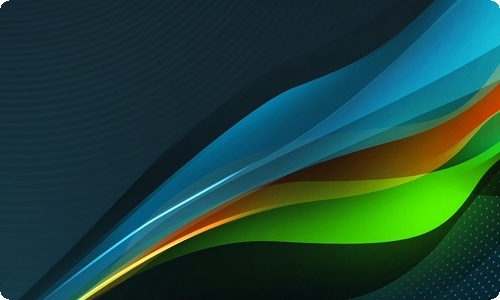
介绍故宫英语作文翻译
北京故宫是中国明清两代的'皇家宫殿,旧称为紫禁城,位于北京中轴线的中心,是中国古代宫廷建筑之精华。以下小编为你收集了介绍故宫英语作文翻译,希望给你带来一些借鉴的作用。
(In front of the meridian gate)
Ladies and Gentlemen:
I am pleased to serve as your guide today.
This is the palace museum; also know as the Purple Forbidden City(紫禁城). It is the largest and most well reserved imperial residence in China today. Under Ming Emperor Yongle, construction began in 1406. It took 14years to build the Forbidden City. The first ruler who actually lived here was Ming Emperor Zhudi. For five centuries thereafter, it continued to be the residence of23 successive emperors until 1911 when Qing Emperor Puyi was forced to abdicate the throne .In 1987, the United Nations Educational, Scientific and Cultural Organization recognized the Forbidden City was a world cultural legacy.
It is believed that the Palace Museum, or Zi Jin Cheng (Purple Forbidden City), got its name from astronomy folklore, The ancient astronomers divided the constellations into groups and centered them around the Ziwei Yuan(North Star). The constellation containing the North Star was called the Constellation of Heavenly God and star itself was called the purple palace. Because the emperor was supposedly the son of the heavenly gods, his central and dominant position would be further highlighted the use of the word purple in the name of his residence. In folklore, the term ”an eastern purple cloud is drifting” became a metaphor for auspicious events after a purple cloud was seen drifting eastward immediately before the arrival of an ancient philosopher, LaoZi, to the Hanghu Pass. Here, purple is associated with auspicious developments. The word jin (forbidden) is self-explanatory as the imperial palace was heavily guarded and off-explanatory as the imperial palace was heavily guarded and off-limits to ordinary people.
The red and yellow used on the palace walls and roofs are also symbolic. Red represents happiness, good fortune and wealth. Yellow is the color of the earth on the Loess Plateau, the original home of the Chinese people. Yellow became an imperial color during the Tang dynasty, when only members of the royal family were allowed to wear it and use it in their architecture.
The Forbidden City is rectangular in shape. It is 960 meters long from north to south and 750 meter wide from east west. It has 9,900 rooms under a total roof area 150,000 square meters .A 52-meter-wide-moat encircles a 9.9-meter—high wall which encloses the complex. Octagon —shaped turrets rest on the four corners of the wall. There are four entrances into the city: the Meridian Gate to the south, the Shenwu Gate(Gate of Military Prowess) to the north, and the Xihua Gate(Gate of military Prowess) to the north, and the Xihua Gate(Western Flowery Gate )to the west ,the Donghua (Eastern Flowery Gate) to the east.
Manpower and ……此处隐藏4024个字……m are cypresses or pines. To the northwest of the hall , there is the Yanhui(Sustaining Sunshine) Pavilion and to the northeast there lies the Duixiu (Accumulated Refinement )Hill. This Hill was built over the foundation of the long- pershed Guanhua (Admiring Flowers) Hall of the Ming Dynasty. It is 14 meters in height and made of al kinds of rocks quarried in jiang su province. At its base stand two nstone lions, each carrying a dragon shooting water 10 meters up into the air from its mouth. There are meandering paths leading to the hilltop. At the top of Duixiu Hill sits the Yujing (Imperial Viewing)Pavilion. Traditionally, On the day of the Double Ninth Festival (the ninth day of the ninth lunar month ), the emperor ,his consort, and his concubines would climb up to Yujing Pavilion to enjoy the scenery.
At the southeastern corner of the Garden is Jiangxue(Crimson Snowy) Verandah. Nearby to the southwest lies Yangxing Study (study of the cultivation of nature) .The yangxing study was used as a royal library during the reign of Emperor Qianlong of the Qing Dynasty. The last emperor of the Qing Dynasty, Puyi once studied English there. In front of the Jiangxue Verandah some Chinese flowering crabapples grow. The structure got its name from the crabapples who blossoms trun from crimson to snowy white. In front of the Verandah, there grows a rare flower that was brought from henna Province under the order of Empress dowager Cixi. In the northest is Chizao Tang (Hall of Using Flowery Language), once used as a library where rare books were stored.
There are also specific pavilions symbolizing the four seasons .The halls of Wanchun and Qianqiu ,representing spring and autumn respectively ,are square in shape and are coupled with multiple eaves and bell-shape and are coupled with multiple eaves and bell-shaped ridges. The halls of Chengrui and Fubi,dedecated to winter and summer, are characterized by two verandahs and bridges at their bases .Paths were paved with colorful pebbles and arranged in 900 different designs.
The Imperial Garden can be accessed through the Qiong yuan (Jade Garden )West gate or the qiong yuan east gate. A third gate, the shunzhen(Obedience and Fidelity)Gate, opens to the north. Its doors are laid in glazed tiles and it was only used by the empress or concubines.
As our tour of the Forbidden City draws to a close, I hope that I have helped you understand why the Palace is a treasure of China and one of the cultural relics of the world. It is under the strict protection of the Chinese government. Since 1949 when the people` s Rupublic of China was founded, nearly one trillion RMB was spent on its restoration and refurbishment. The Forbidden City has undergone four major facelifts to date. Each year, the government earmarks a large sum to gather, sort and study cultural relics. The Palace now contains a total of 930,000cultural relics. Well, so much for today .Let` s go to reboard the coach. Thank you !




